The airplane luggage compartment is essential to every commercial flight, providing the much-needed space to store passengers’ belongings during travel. This often overlooked area of the aircraft is crucial in ensuring a smooth and efficient flight experience for passengers and crew members.
From carry-on bags and personal items to larger suitcases and strollers. The designers have designed the luggage restrictions compartment to accommodate many items and keep them safe throughout the journey.
Here, we will delve into the intricacies of the airplane luggage compartment, exploring its purpose, design, and the challenges faced in its operation. We will also discuss the various solutions airlines implement to optimize this space and improve the overall flying experience for passengers.

What Is The “Airplane Luggage Compartment”?

Airplanes allow passengers to carry a certain amount of complex baggage while traveling. To carry these bags and other things, they have a container or compartment called an airplane baggage compartment. Also called hand luggage, cabin luggage, carry-on, etc.
Though most of your heavy baggage allowance fees go to cargo, you can carry your essential and valuable things. But travelers have a limit to how much they can carry on hand. This limit varies from airline to airline.
Types Of Airplane Luggage Compartments
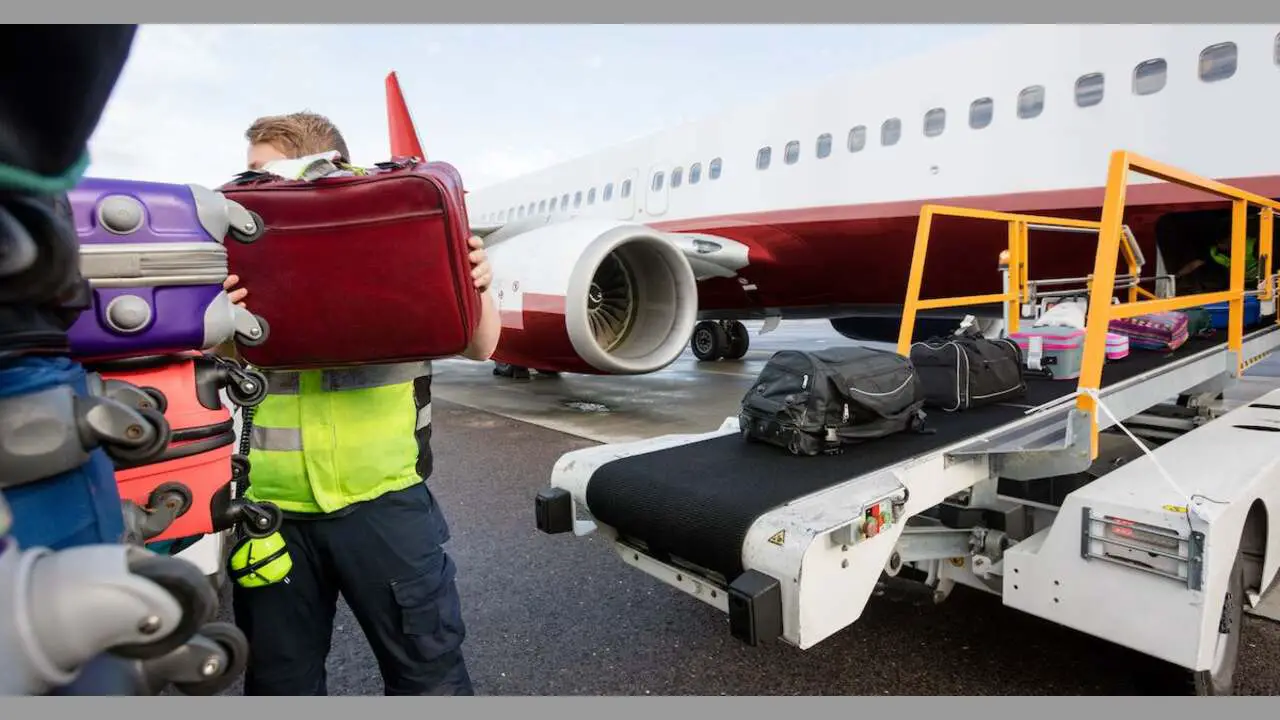
These are located above the passenger seats in the cabin. They are handy for storing smaller items such as carry-on bags, backpacks, and personal belongings. They are usually smaller and designed to accommodate smaller bags and personal items.
These compartments are located in the lower section of the aircraft, separate from the passenger cabin. They are handy for storing larger luggage, checked bags, and cargo. Three main types of luggage compartments commonly found in airplanes exist.
- Overhead compartments
- Underseat compartments
- Cargo holds
What Is The Size Of The Luggage Compartment?
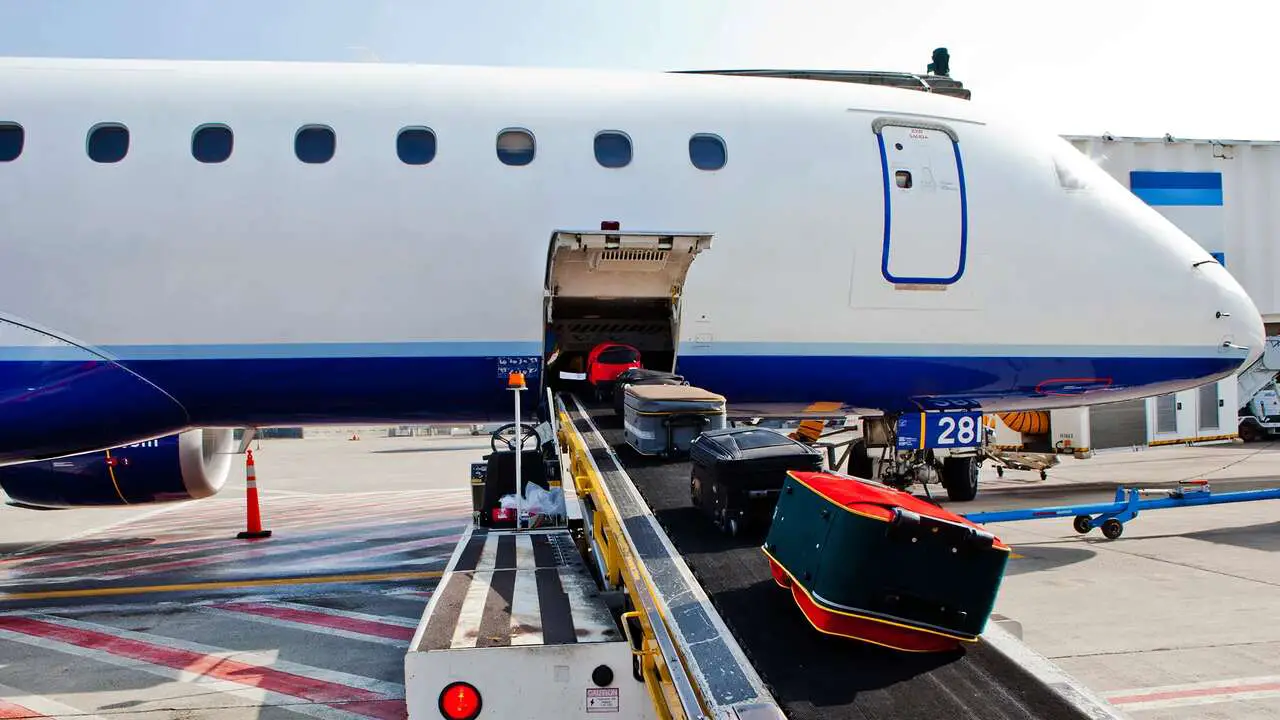
It can also vary from plane to plane. But there are some worldwide standards. According to the International Air Transport Association (IATA) guidelines, airlines have to maintain some standards. For example, a cabin bag can be a maximum of 56cm long and 25cm wide. This measurement includes the handle, pockets, etc.
Again the size of the compartments differ according to which class you are booking. You get a more spacious compartment in business class than in economy class. Here I am mentioning some allowed sizes of different airlines from their websites. In Japan Airlines, the dimension of the luggage compartment is 45cm x 35cm x 20 cm. In American Airlines, Delta Airlines, and United Airlines, the size is 56cm x 36cm x 23cm.
Restrictions
You need to know a few restrictions regarding airplane engine’s luggage compartments. First and foremost, we do not allow you to bring any liquids, gels, aerosols, or other liquid or gaseous substances in your carry-on and checked bags.
This includes everything from hairspray to flammable liquid paint. You’re also not allowed to bring anything that could create a fire or explosion, such as fireworks, incendiary devices, and explosive materials. Finally, we do not allow you to bring any weapons into the cabin of the airplane.
You can only carry hand luggage on board in two places as part-last. This means not everything within your bag can fit under the seats in front or around the aisle on an airplane ride due to safety regulations (this also applies during take-off & landing while flying).
What Can I Carry?
There are rules and regulations about what kind of things you can carry in a flight or what you can put in the storage compartment. Efficient utilization of space is a key consideration in designing the luggage compartment. Airlines employ innovative techniques to maximize the available space, allowing for optimal storage capacity while maintaining the aircraft’s balance and stability. These rules vary from country to country.
- Use clear containers or zip-lock plastic bags.
- Aerosols, jellies, liquid eyeliners, and lipsticks are also liquid.
- There are some restraints that you should remember.
- Do not carry sharp or pointy things like razors, knives, or scissors.
You can check the United States Transportation Security Administration’s (TSA) guidelines for more information.
Internal Dimensions Of The Fuselage
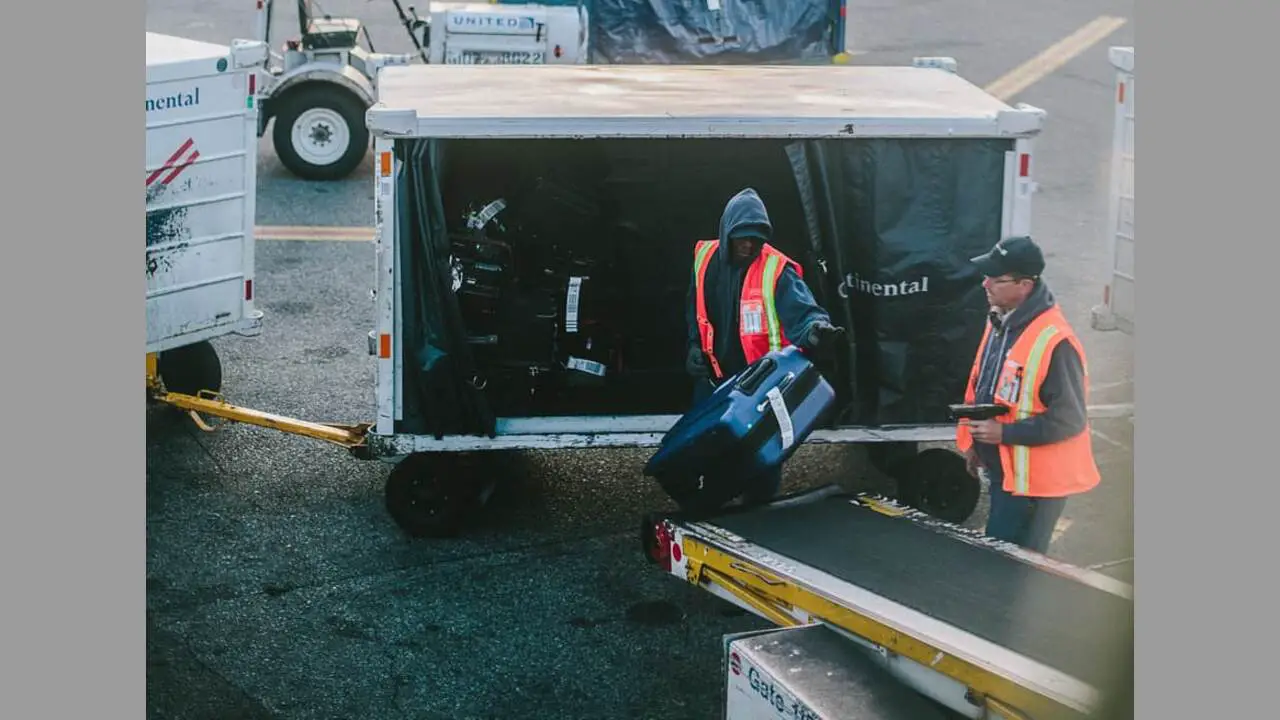
The airplane luggage compartment is an essential component of any aircraft, designed to store passengers’ belongings during flight safely. It plays a crucial role in ensuring the overall comfort and safety of airline travel while also maximizing the available cabin space. The luggage compartment is typically located in the lower section of the aircraft, beneath the passenger seating area. Here are the external dimensions of the Fuselage:
- The fuselage width is 194 inches.
- The fuselage length is 277 inches.
- The fuselage height is 72 inches.
- The fuselage width between the front and rear wheel wells is 97 inches
- The fuselage height between the front and rear wheel wells is 122 inches.
Packing Tips For The Airplane Luggage Compartment
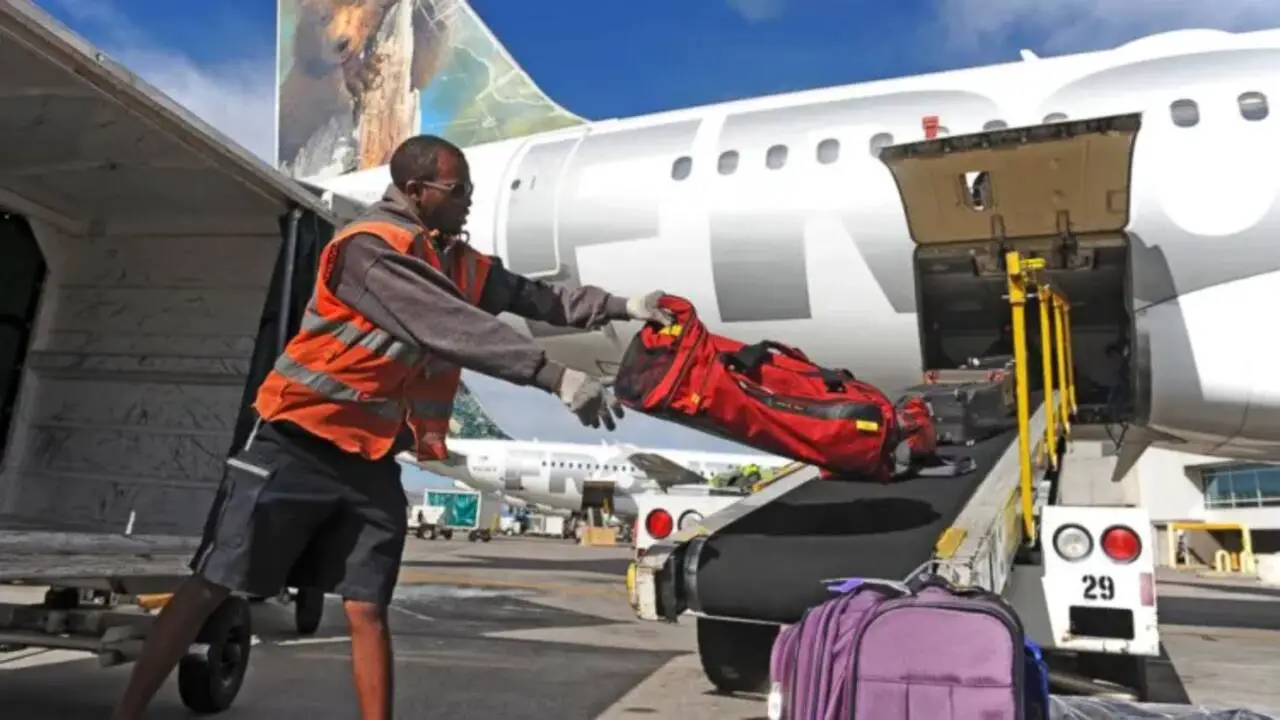
Constructed with durable materials and advanced security features. The designers designed the airplane luggage compartment to withstand the rigors of air travel. Airlines ensure that the luggage compartment is spacious enough to accommodate the average passenger’s needs while adhering to weight and size restrictions imposed by safety regulations. Here are some tips for packing your luggage in the airplane’s size luggage compartment:
- Pack compactly to maximize space in the luggage compartment
- Use packing cubes or compression bags to organize and compress your items
- Place heavier items at the bottom and lighter items on top to prevent crushing
- Wrap fragile items in bubble wrap or clothing for added protection
- Utilize the pockets and compartments of your luggage for smaller items and accessories
- Roll your clothes instead of folding them to save space and minimize wrinkles
- Don’t forget to pack essential items like toiletries, medications, and a change of clothes in your carry-on bag
- Keep important documents, such as passports and travel itineraries, in a secure and easily accessible location
- Double-check the weight and size restrictions for your airline to avoid any additional fees or issues at the airport.
Security Measures For Luggage In The Compartment
Some aircraft models feature innovative storage solutions to optimize space utilization, such as overhead compartments and under-seat storage areas. These compartments are strategically designed to provide easy access to passengers’ items, such as carry-on bags and laptops, without compromising passenger comfort or safety. Security measures for luggage in the compartment include the following:
- Use Of TSA-Approved Locks: These locks can be opened by Transportation Security Administration (TSA) officers using a master key, allowing them to inspect the contents of the luggage without damaging the lock.
- Wrap Or Seal Your Luggage: Use luggage wraps or plastic seals to secure your bags. This can help prevent unauthorized access or tampering.
- Keep Valuable Items With You: It is recommended to keep valuable items such as jewelry, electronics, and important documents in your carry-on bag rather than in checked luggage.
- Avoid Overpacking: Overpacked bags can be more difficult to inspect, which may lead to additional screening or delays. Pack your size for cabin luggage neatly and avoid exceeding weight limits.
- Use Traceable Luggage Tags: Ensure your luggage is properly labeled with your contact information. Consider using luggage tags with tracking capabilities to locate your bags in case of loss or mishandling easily.
- Stay Vigilant: While in the airport and on-board the aircraft, keep an eye on your belongings and report any suspicious activity or unattended bags to airport or airline staff.
Handling And Loading Procedures For The Airplane Luggage Compartment
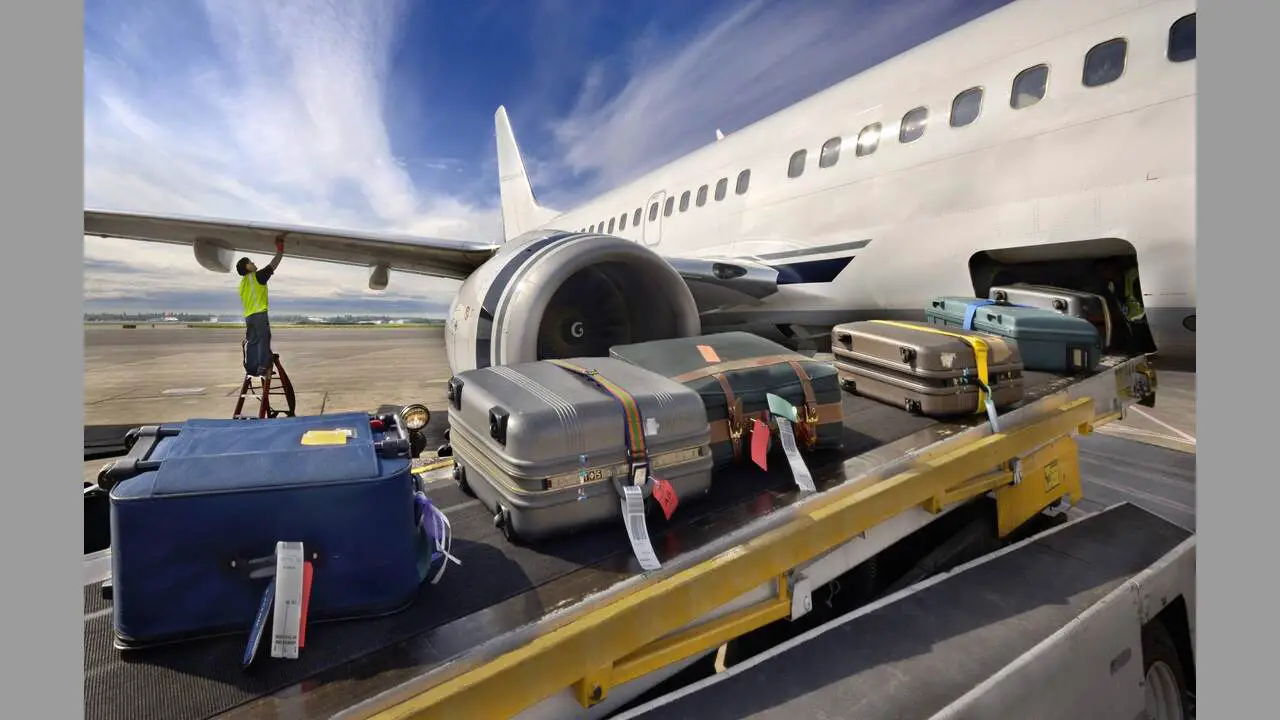
Safety is paramount when it comes to the design and operation of the airplane luggage compartment. It has sturdy latches and locks to prevent accidental opening during flight. Ensuring that passengers’ belongings remain secure throughout the journey. Handling and loading procedures for the Airplane Luggage Compartment:
- Before loading, ensure the luggage compartment is clean and free of debris or obstacles.
- Handle each piece of luggage with care to prevent damage. Avoid throwing or dropping luggage into the compartment.
- Place heavier and larger items at the bottom of the compartment, distributing the weight evenly to maintain balance. This will help prevent the airplane overhead from becoming tail-heavy or nose-heavy during flight.
- Use appropriate lifting techniques to avoid strain or injury when maneuvering luggage into the compartment. If necessary, ask for assistance from a colleague or ground crew member.
- Secure the luggage properly to prevent shifting during flight. Use straps or nets to hold the luggage in place and prevent it from moving around during takeoff, landing, and turbulence.
Common Issues And Complaints With The Airplane Luggage Compartment
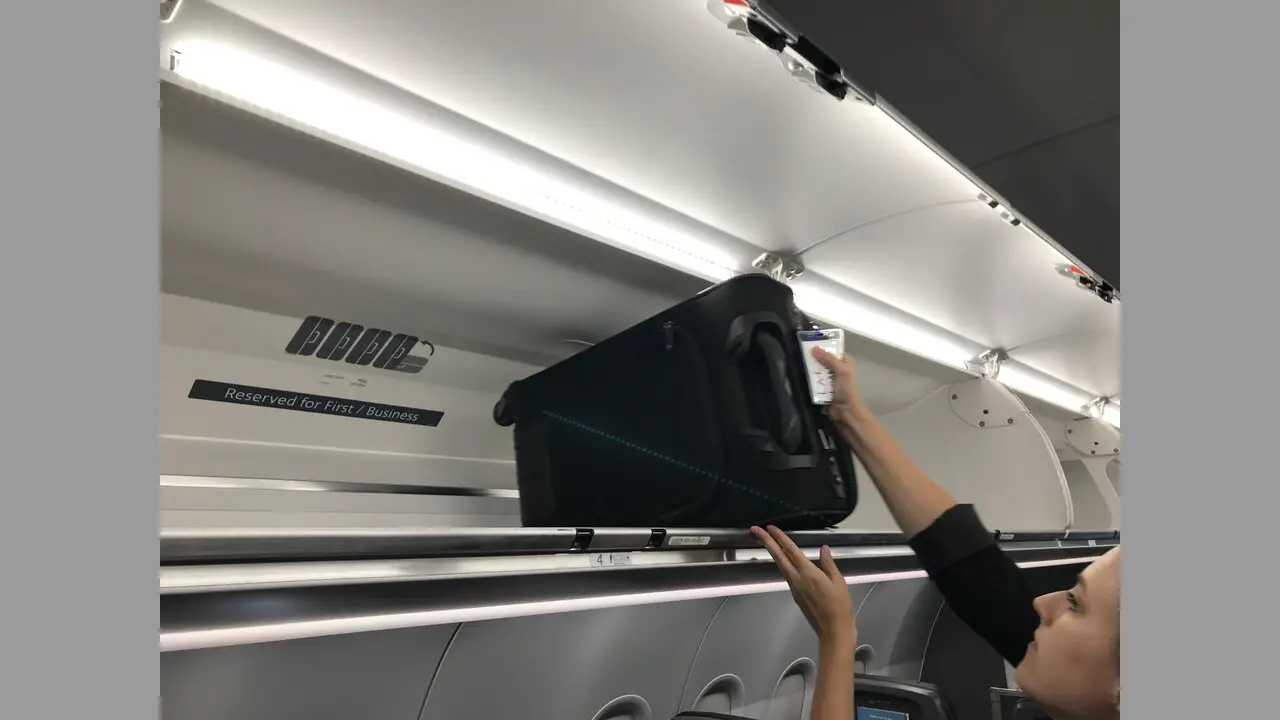
The airplane luggage compartment, the cargo hold, is an essential commercial aircraft component. Designed to safely and efficiently store passengers’ belongings, the luggage compartment ensures a seamless travel experience for individuals worldwide. Common issues and complaints with the airplane luggage compartment include:
- Damage To Luggage: Sometimes, luggage can get damaged during the loading and unloading. This can result in broken handles, wheels, or even ripped fabric.
- Lost or Mishandled Luggage: There have been cases where luggage is misplaced or mistakenly sent to the wrong destination. This can cause inconvenience and stress for passengers without their belongings.
- Limited Space: The airplane luggage compartments are often limited in size, especially for carry-on luggage. This can lead to difficulties in finding space for larger or bulkier items, forcing passengers to check them in instead.
- Overhead Bin Space Availability: With limited space available in the overhead bins, there can be instances of passengers not finding enough space for their carry-on luggage. This can result in delays during boarding as passengers try to find alternative storage options.
- Weight Restrictions: Airlines have weight restrictions for checked and carry-on luggage. Exceeding these restrictions can lead to additional fees or the need to remove items from the luggage.
- Theft Or Pilferage: Unfortunately, theft or pilferage from checked luggage has occurred. It is important to keep valuable items and important documents with you in your carry-on luggage rules to minimize the risk.
- Fragile Items: Fragile items such as electronics, glassware, or artwork can be at risk of damage during handling and transport, despite being properly packed.
Conclusion
The airplane luggage compartment is a crucial air travel component that often goes unnoticed. It is responsible for safely storing and transporting passengers’ belongings and must adhere to strict regulations and safety protocols. As travelers, we should appreciate the importance of this compartment and follow instructions for efficient and secure packing.
The hard work and dedication of the airline staff ensure that our luggage reaches its destination with us, allowing us to focus on the exciting adventures ahead. Next time you fly, take a moment to appreciate the unsung hero of air travel – the airplane luggage compartment. By understanding its significance and following guidelines for packing, we can help maintain efficiency and safety in air travel.
FAQs
1.What Do We Call The Luggage Part Of A Plane?
Ans: The luggage part of a plane is called the cargo hold or the baggage claim compartment. We meticulously engineer the cargo hold to meet strict safety regulations and industry standards.
2.What Do We Call A Luggage Compartment?
Ans: People commonly refer to the luggage compartment in a vehicle as the trunk or boot. It is a dedicated space for storing and transporting various items, such as suitcases, groceries, sports equipment, etc.
3.Where Does The Airplane Store The Luggage?
Ans: Typically, the aircraft stores luggage in its cargo hold. The compartment is beneath the plane’s main deck, accommodating bags, suitcases, and other checked-in items.
4.What Is The Name Of The Place Where You Put Your Luggage On A Plane?
Ans: The place where you put your luggage on a plane is called the overhead compartment. Constructed with durable materials such as reinforced plastic or aluminum alloys, overhead compartments are designed to withstand the rigorous demands of air travel.
5.What Do You Call The Place Where You Put Your Luggage On A Plane?
Ans: Luggage is also commonly referred to as suitcases or bags. These durable containers are designed to hold personal belongings and travel necessities securely.
